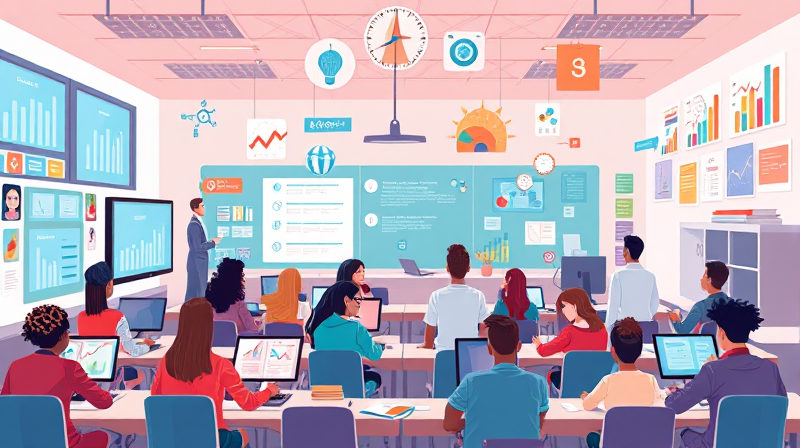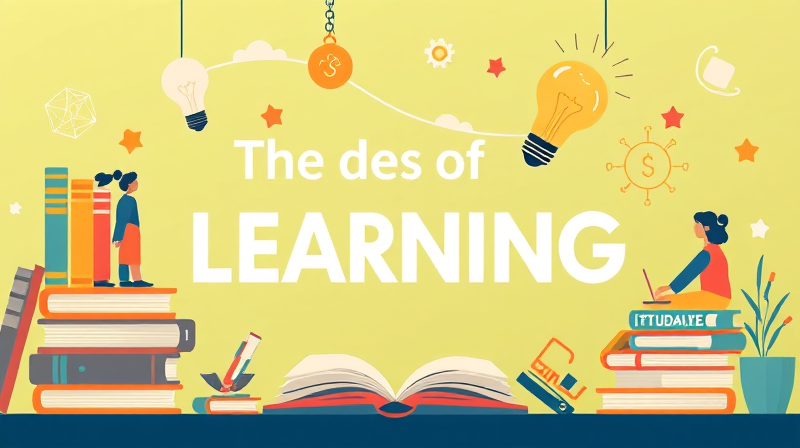In today's rapidly evolving educational landscape, achieving targets is more than just setting goals and hoping for the best. Concrete methods are essential for translating strategic plans into tangible results. Educators, administrators, and policymakers need structured, measurable approaches that address the diverse needs of learners and leverage modern technology for lasting impact.
This article explores innovative techniques and trends that enable schools and educators to define and reach educational targets effectively. It discusses data-driven decision making, state-of-the-art instructional materials, technology integration, career and technical education, outcomes-based funding, and the emphasis on disciplinary literacy.
Data-Driven Decision Making as a Cornerstone
The shift towards data-driven decision making has redefined strategies within modern classrooms. By using advanced analytics and student performance data, educators gain a clear picture of the strengths and areas for improvement. This method allows for changes to be implemented in real time and ensures that every intervention is supported by evidence.
Employing data-driven approaches offers several advantages:
- Precise goal setting: Analysis of data facilitates the setting of realistic, measurable educational goals.
- Tailored interventions:: Data highlights the unique challenges faced by individual students, ensuring interventions are customized.
- Continuous progress monitoring: Regular feedback and assessment help in making strategic adjustments to teaching practices.
These strategies foster an environment where educators and learners work together to meet clear, defined objectives, making the learning process more efficient and impactful.
High-Quality Instructional Materials and Modern Learning Environments
Another critical trend is the adoption of high-quality instructional materials (HQIM), which are grounded in research and evidence-based practices. States are now prioritizing materials that match rigorous academic standards and support the comprehensive development of every student.
High-quality materials support education in several ways:
- Structured learning approaches: Well-researched resources create a clear roadmap for curriculum delivery.
- Effective teaching methods: Teachers benefit from materials that complement their instructional strategies.
- Equal access: Quality resources help bridge educational disparities, ensuring every student has an equal opportunity to succeed.
These elements collectively contribute to an enriched learning environment where students are better prepared to tackle academic challenges.
Integrating Technology to Transform Education
The integration of advanced technologies has irrevocably changed how educational targets are defined and achieved. With tools such as artificial intelligence, virtual reality, and robust data analytics systems, educators are now empowered to provide personalized and immersive educational experiences.
Some of the prominent developments include:
- AI-powered learning platforms: These systems customize learning experiences based on student performance.
- Virtual Reality Simulations: VR creates immersive environments that enhance understanding through practical simulation.
- Real-time feedback mechanisms: Data analytics provide immediate insights into student progress, facilitating agile teaching approaches.
This technological revolution not only facilitates personalized learning pathways but also brings modern contexts to traditional educational models, providing a dynamic way to engage students deeply.
Career and Technical Education as a Pathway to the Future
The growing importance of Career and Technical Education (CTE) underscores the need to align classroom learning with industry demands. As the job market evolves, CTE programs have expanded to include technological fluency, technical skills, and soft skills, creating immersive experiences that mirror real-world work environments.
Key components of effective CTE programs are:
- Industry-like classroom environments: Learning spaces that reflect current industry trends and setups.
- Technology-infused curricula: Incorporation of cutting-edge topics such as AI, computer science, and robotics.
- Business partnerships: Collaborations with local enterprises ensure that learning is practically oriented and relevant.
These programs prepare students for future challenges and opportunities, ensuring they possess the skills necessary to succeed in competitive, fast-changing environments.
Linking Success with Outcomes-Based Funding
Funding models in education are also undergoing transformative changes with a shift towards outcomes-based funding. This innovative approach links financial rewards and support directly to measurable achievement outcomes, pushing institutions to not only set goals but also meet them effectively.
Important aspects of outcomes-based funding include:
- Performance rewards: Institutions receive financial incentives when students achieve academically recognized milestones.
- Focus on tangible results: Programs are evaluated based on real-world outcomes such as graduation rates and job placements.
- Strategic resource allocation: Funding is funneled into programs that show clear evidence of success, driving continuous improvement.
This strategy motivates all stakeholders to pursue excellence, ensuring that educational programs remain focused on delivering true results.
Embracing Disciplinary Literacy to Enhance Critical Thinking
The final aspect considered here is the concept of disciplinary literacy, which emphasizes the importance of literacy beyond traditional reading and writing. It integrates these skills into various subject areas to foster critical thinking and comprehensive understanding.
Key benefits of disciplinary literacy include:
- Subject-specific literacy: Teaching methodologies are adapted to the context of each discipline, ensuring that communication and content knowledge go hand in hand.
- Critical analysis: Students learn to evaluate, analyze, and synthesize information in meaningful ways.
- Digital portfolios: These serve as dynamic records of students' progression and mastery of subject-specific skills.
Adopting this holistic approach encourages students to engage in active learning and fosters a deeper understanding of subject content across their academic journey.
In conclusion, concrete methods for defining and reaching educational targets are key to the future success of our educational systems. By leveraging data, integrating technology, ensuring access to high-quality instructional materials, embracing CTE programs, aligning funding with outcomes, and fostering disciplinary literacy, educators can ignite the spark of potential in every student. With dedication and a strategic approach, every learner has the opportunity to excel and contribute to the road of progress and innovation in education.
The journey towards pushing boundaries in education is challenging but rewarding. These concrete methods not only refine the way we set our targets but also help us create an inspiring learning environment where growth, achievement, and excellence are attainable for all.








